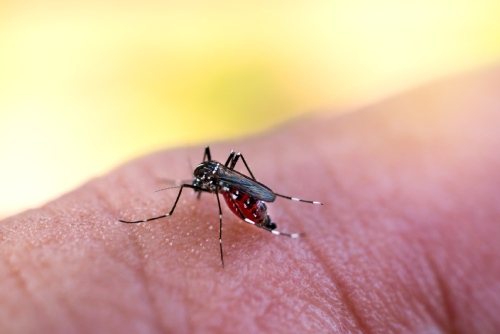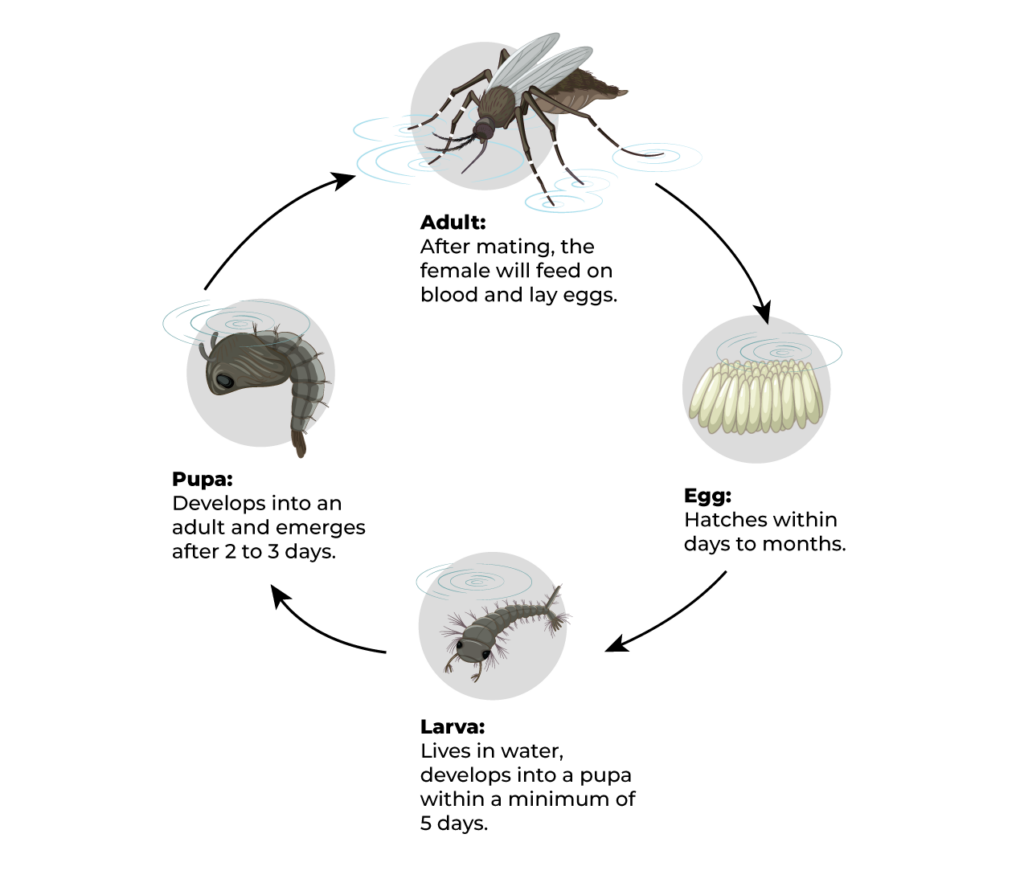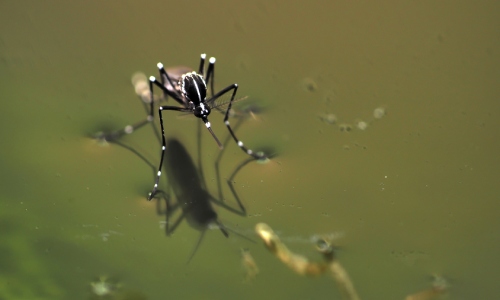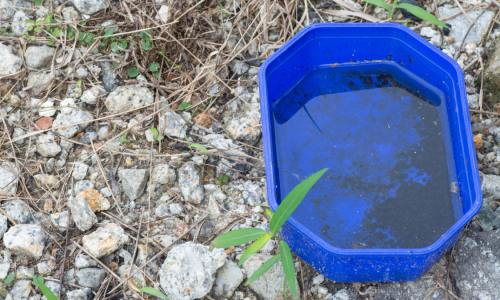What are the Chances of Dying from Dengue Fever?

The Aedes mosquito can be found in tropical and subtropical areas around the world. It carries the dengue virus and makes you sick. Of course, we want to avoid it. But, how do you differentiate it from other mosquitoes? Let’s learn more about it.
What is Aedes mosquito?
Aedes mosquito is a type of mosquito that can spread dengue fever and several other infectious diseases, depending on the type1. There are several types of Aedes mosquitoes, for examples:1,2
- Aedes aegypti
- Aedes albopictus
- Aedes polynesiensis
- Aedes japonicus
- Aedes atropalpus
Aedes aegypti and Aedes albopictus are the most common type of Aedes mosquito responsible for majority of the dengue fever cases2. They also carry and spread other types of infection such as chikungunya2. Aedes aegypti is also known to spread yellow fever and Zika virus2.
How to recognize the Aedes mosquito?
Adult Aedes mosquitoes have narrow bodies1. The abdomen, legs and thorax (the part that connects the head and abdomen) are striped in white and black1.
The adult female Aedes mosquito abdomen has a pointy tip1. Only female mosquitoes feed from human blood for the development of their eggs3.
Besides body shape and colour, another thing that differentiates it is the fact that it is most active during the day1. The peak time it goes out to feed is in the morning at dawn and in the evening before dusk1,4.

What is the life cycle of Aedes mosquito?
The Aedes mosquito has a four-stage life cycle: egg, larva, pupa and adult5.

Egg: Aedes mosquito lays its eggs in stagnant water. The eggs only need a small amount of water. Once they are laid, the eggs can hatch within days to weeks or months5.
Larva: After hatching from the egg, the larva will grow and develop until it reaches the pupa stage5.
Pupa: The pupa is a non-feeding stage. During this time, the mosquito will develop into an adult and emerges after 2-3 days5.
Adult: Once it has reached the adult stage, the mosquito will mate and start the cycle again1,3,5.
Adult mosquitoes can usually live for 2 weeks3. However, female mosquitoes can lay dozens of eggs up to 5 times during their lifetime4. These mosquito eggs are also very resistant to weather and extreme climate such as dry or freezing temperatures. It can last up to several months1.

How Aedes mosquito spreads dengue?
The Aedes mosquito spreads dengue by biting a person infected with the illness. The mosquito acquires the dengue virus when it bites an infected person4. The virus will then replicate within the mosquito4. Once the virus has multiplied enough, usually within a week it will be able to infect other people through a mosquito bite4.

Aedes aegytpi mosquito is an intermittent biter and prefers to feed on several individuals during feeding4. This helps it spread the dengue virus quickly and become one of the main dengue vectors in dengue-endemic areas4.
Adult mosquitoes usually rest indoors in dark areas (closets, under beds, behind curtains) as they are protected from wind, rain and most predators here4. Therefore, it is important always to clean our surrounding living area to avoid becoming a breeding ground for these mosquitoes.
Banish Aedes From Our Home
To prevent dengue infection, one of the ways is by ensuring our home and living area are not mosquitos’ potential breeding ground. Here are the steps you can take to banish them from your surrounding area:6,7
- Keep our house clean and free from stagnant water like old tyres, flower pots and basins.
- Add abate (to kill mosquito larvae) if you need to keep the water.
- Cover your water container eg: from the rain collection and water collection tank.
- Change water in your pet water dispenser frequently.
- Keep fish in the pond.
- Frequent fogging to kill adult Aedes in the surrounding housing area with high dengue cases should also be done8.mosquitoes

Apart from banishing their potential breeding ground, protect yourself from Aedes mosquito by:6,7
- Wearing long-sleeved clothing and trousers in bright colours when going outdoors.
- Use mosquito nets when sleeping.
- Use mosquito repellent.
- Install mosquito mesh at your window.
- Avoid outdoor activities during the peak hours of this mosquito feeding (dawn and dusk).
Everyone is at risk of dengue. Let’s do our best to protect ourselves and others from dengue.
References
- Rogers, K. Encyclopedia Britannica. Aedes | Description, Life Cycle, & Disease Transmission. | https://tinyurl.com/2twp6hcb | Accessed on 24 August, 2022.
- European Centre for Disease Prevention and Control. Mosquito Factsheets. | https://tinyurl.com/452pwtxb | Accessed on 24 August, 2022.
- National Environment Agency. Aedes Mosquito | https://tinyurl.com/2yu2b7s9 | Accessed on 24 August, 2022.
- World Health Organization. Dengue and Severe Dengue | https://tinyurl.com/ryx8net3 | Accessed on 24 August, 2022.
- Centers for Disease Control and Prevention. Aedes aegypti and Ae. albopictus Mosquito Life Cycles | https://tinyurl.com/3f9v4a6s | Accessed on 24 August, 2022.
- Idengue. Langkah Pencegahan | https://tinyurl.com/2hdpands | Accessed on August 25, 2022
- InfoSihat. Demam Denggi | https://tinyurl.com/2p87sz58 | Accessed on 25 August, 2022
- Kementerian Kesihatan Malaysia. Cawangan Penyakit Bawaan Vektor Kementerian Kesihatan Malaysia. Garis Panduan Semburan Kabus oleh Komuniti (COMFOG). 2005;1–26 | https://tinyurl.com/25y278hs | Accessed on 25 August, 2022













